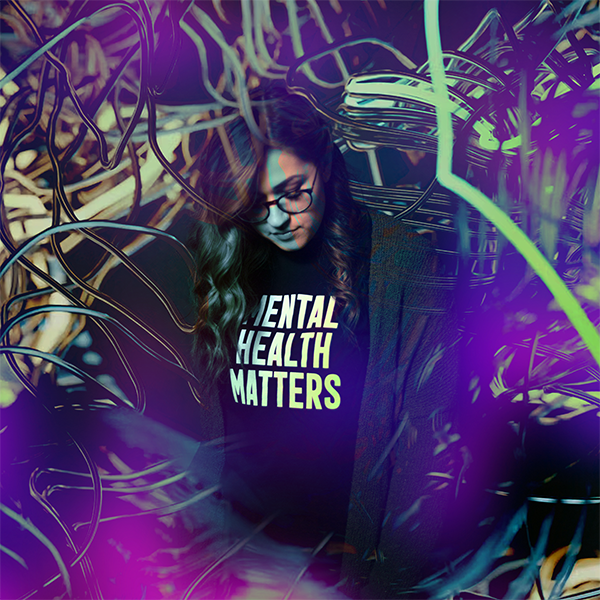Blue Christmas: Is it Really the Most Wonderful Time of the Year?
*Editorial Note: My initial title for Mayra’s poignant meditation on loss in the Christmas season was “Advent: Grief and Love Hold Hands.” This title would serve to both describe the essence of her piece and neatly complete our 2023 series on the four traditional Advent themes of hope, peace, joy, and love. However, grief and loss aren’t neat, and they rarely come to a tidy place of completion. Mayra affirms this, and suggests that “We grieve because love has been disturbed from its place and forced to be redefined.” This is both beautiful, and beautifully true.
Additionally, as this piece publishes, today happens to be December 21st, which is the longest night of the Northern Hemisphere’s young winter, also known as the winter solstice. The Southern Hemisphere, where I live in South Africa, is enjoying its longest annual amount of warm sunlight, our summer solstice. Our longest night is on June 21st each year, which of course is the Northern Hemisphere’s summer solstice. As I was editing Mayra’s piece, I learned that the Church has long recognized “The Longest Night” by holding a Blue Christmas liturgy each Advent season, creating space to process the grief and loss we all carry. Given the heaviness of this cultural moment (Genocide in Gaza, wars in Ukraine, the DRC, and numerous other places, plus a divisive presidential election, rampant inflation, and countless other areas of personal strife), I thank Mayra (and the Church historical) for acknowledging that the Christmas season is hard for many people.
Thus, “Blue Christmas: Is It Really the Most Wonderful Time of the Year?” fits. ~CK
Advent: Grief and Love Hold Hands
Each year, come November, something begins to shift in public spaces. Before you know it, Halloween displays and ‘pumpkin-spice-everything’ begins to fade into the background, replaced by holiday scenery, and most notably, Christmas music. Not the type that I get to carefully select myself set to salsa rhythms or R&B riffs, but the commercial kind piped into every store like clockwork. Where some hear a cheerful backdrop to their shopping, I on the other hand, hear a grief trigger. There I am smelling candles and minding my business when suddenly “It’s the most – wonderful time – of the year!!!” starts blasting throughout the store. My stomach flips, my chest tightens, and all I can think is “I have to get out of here before the time warp happens again” and a looming feeling descends as these specific sounds transport me back to a grief-filled moment in time.
Eight years ago this month, I was sitting by my father’s bedside, holding his hand while he took his last breaths. There is a lot about that day I vividly remember, but what sticks out to me when I replay it in my head is leaving the hospital that night. I got into my car, and I remember turning the key and the radio starting up; the Christmas station. It was in that exact moment as the speakers vibrated and seemingly joyous holiday melodies filled the very air that I could not seem to find, that it hit this Daddy’s girl hard – he was gone and never coming back. We buried him ten days before Christmas, facing a fast approaching first major holiday without him while our grief was still fresh. Nothing about those days felt like it was the most wonderful time of the year.
///
Advent is known throughout the Church as a time of expectation – a season of waiting whereby we countdown to Christmas and commemorate the birth of the Messiah. In its most basic definition, advent signifies a notable arrival. While I can get behind the reality that we often find ourselves experiencing advent moments in life, an obvious question must also be asked:
What exactly are you supposed to do when that notable arrival doesn’t come in a pretty package?
At this time of year I am reminded firsthand of the tension between these two realities: Grief and Advent. The joy of Christ’s birth amidst the heartache of a loved one’s death. So when I was asked to lend my voice to this series, I sat in that familiar tension.
When we reflect on words like hope, peace, and joy, none quite seem to fit the full scope of an emotion that ebbs and flows as much as grief does. How timely that as I sat and wrestled with these questions, I turned to the word assigned to me: Love. A phrase I once heard on my grief journey, and one that is often echoed in various grief resources is that grief is the final act of love. Grief and love exist profoundly hand in hand. More profoundly, grief and love hold hands intentionally, because we grieve in proportion to how much we loved that individual. We grieve because that love has been disturbed from its place and forced to be redefined.
Grief and love hold hands intentionally, because we grieve in proportion to how much we loved that individual. We grieve because that love has been disturbed from its place and forced to be redefined. (1/2) Share on X
At this time of year I am reminded firsthand of the tension between these two realities: Grief and Advent. The joy of Christ’s birth amidst the heartache of a loved one’s death. (2/2) Share on X
It’s in this complex relationship between grief and love that I feel deeply seen at the Advent table.
As believers, we know two things to be true: that God is Love, and that Love came down in human form. And like my own grief journey, this first Nativity was not as lovely as we try to make it for the sake of a decorative painting.
Like my grief, Jesus did not arrive in a pretty package but rather, born in the equivalent of an animal’s feeding trough, a manger.
Light of the world, born into darkness.
A fresh beautiful baby, laid in a feeding trough.
Love in human form, born into cold discomfort.
Love that saw my own suffering, yet chose to experience it firsthand.
Love that conquered through death and remains unwavering, steadfast.
And like my grief, Love that changed form to be present on earth.
Like my own grief journey, this first Nativity was not as lovely as we try to make it for the decorative painting. Jesus did not arrive in a pretty package but rather, born in the equivalent of an animal's feeding trough, a manger. Share on X
We live in a culture where grief is not always normalized. We get a few days off work for “bereavement leave” and then are expected to return our loss neatly to its shelf. I spoke to a trusted figure in my life whose own response to this dilemma was to ask the question: “What are we supposed to do with all that pain?”
Lisa Orris, a local pastor in Crystal Lake, IL, also suffered a tragic loss eight years ago when her eldest son was taken unexpectedly. It made her search for an answer to this question. Pastor Lisa found it in a surprisingly powerful, widely unknown Advent service. Celebrated annually on December 21st, which is the longest night of the young Northern hemisphere winter, more commonly known as the winter solstice, this service has historically been known as “Blue Christmas,” a longstanding tradition in which people gather on the “darkest night of the year” to honor those they have lost. Pastor Lisa took this tradition and created a space for her community to come together in mourning. In a society that tells us to put our grief on the shelf and move on with life, Pastor Lisa has interrupted this narrative to declare that this is a space for you to come as you are. This is a space to honor both the pain and love that lies under the weight of our grief.
In Pastor Lisa’s own words: “One of my big words I’ve learned in my grief journey is ‘AND.’ You can be sad and celebrating on the same day. You can be grieving and laughing at a funny story. I actually think that this is the abundant life. To try to separate these two is not possible.”
To try to separate grief and love is simply not possible. But the truth of the matter is, it doesn’t have to be one or the other. Perhaps when we come to understand this, we can better love one another through the Christmas season.
The message in this week’s exploration of Advent is not simply that God loves us and sent Jesus into our midst, but that we are also to love one another as God loved us. And this charge to love one another is a continuous one. It challenges us to create a welcoming space that gives permission to authentically be both/and. If the Light of the world can be born vulnerably into darkness and despair, then maybe those of us who have experienced loss can also sit vulnerably at the Advent table, holding both our grief and our love.
///
Mayra Ramos is a Bay Area native from San Jose, CA, currently residing in Chicago, IL. She received her Master of Divinity from North Park Theological Seminary where she serves as Assistant Director of Admissions. As a Latina first generation graduate, Mayra aims to be a bridge for students to gain equitable access to theological education. Raised in a pastoral household, Mayra is passionate about issues surrounding church leadership, spiritual care, and shepherding God’s people.
To try to separate grief and love is simply not possible. But the truth of the matter is, it doesn’t have to be one or the other. Perhaps when we come to understand this, we can better love one another through the Christmas season. Share on X



